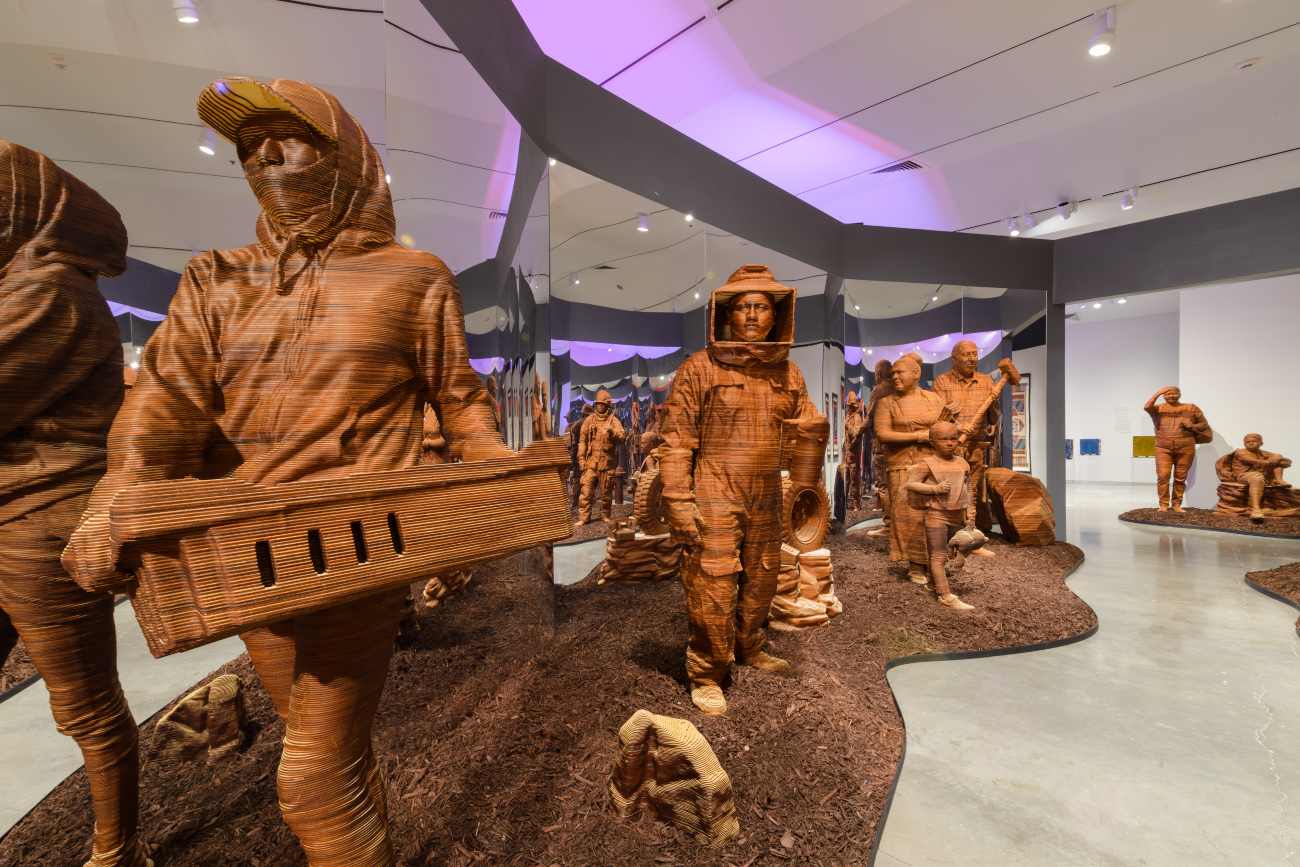For Los Angeles-based Chilean multimedia artistGuillermo Bert, his biggest source of inspiration is his binational life story.
As an immigrant himself, Bert understands and hopes to spotlight the plight of the first-generation Latino community.
Bert’s artistic practice has long had a documentary approach, making artistic records of cultural narratives.
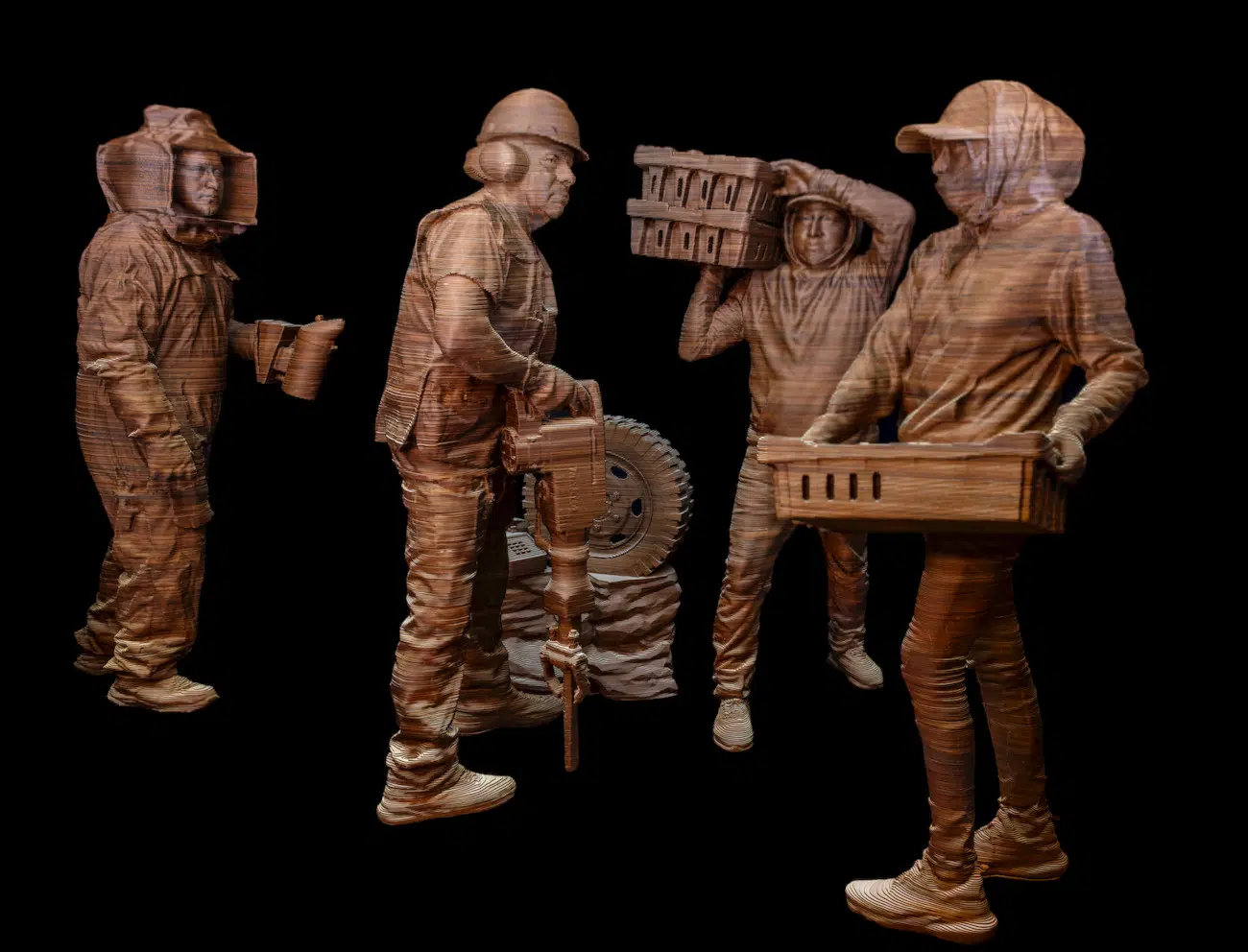
The result is a collection ofbona fidemonuments to these people’s labor and resilience.
My Modern Met talked to Bert about this evolving project, which was recently exhibited during theLA Art Show.
Read on for My Modern Met’s exclusive interview with Guillermo Bert.
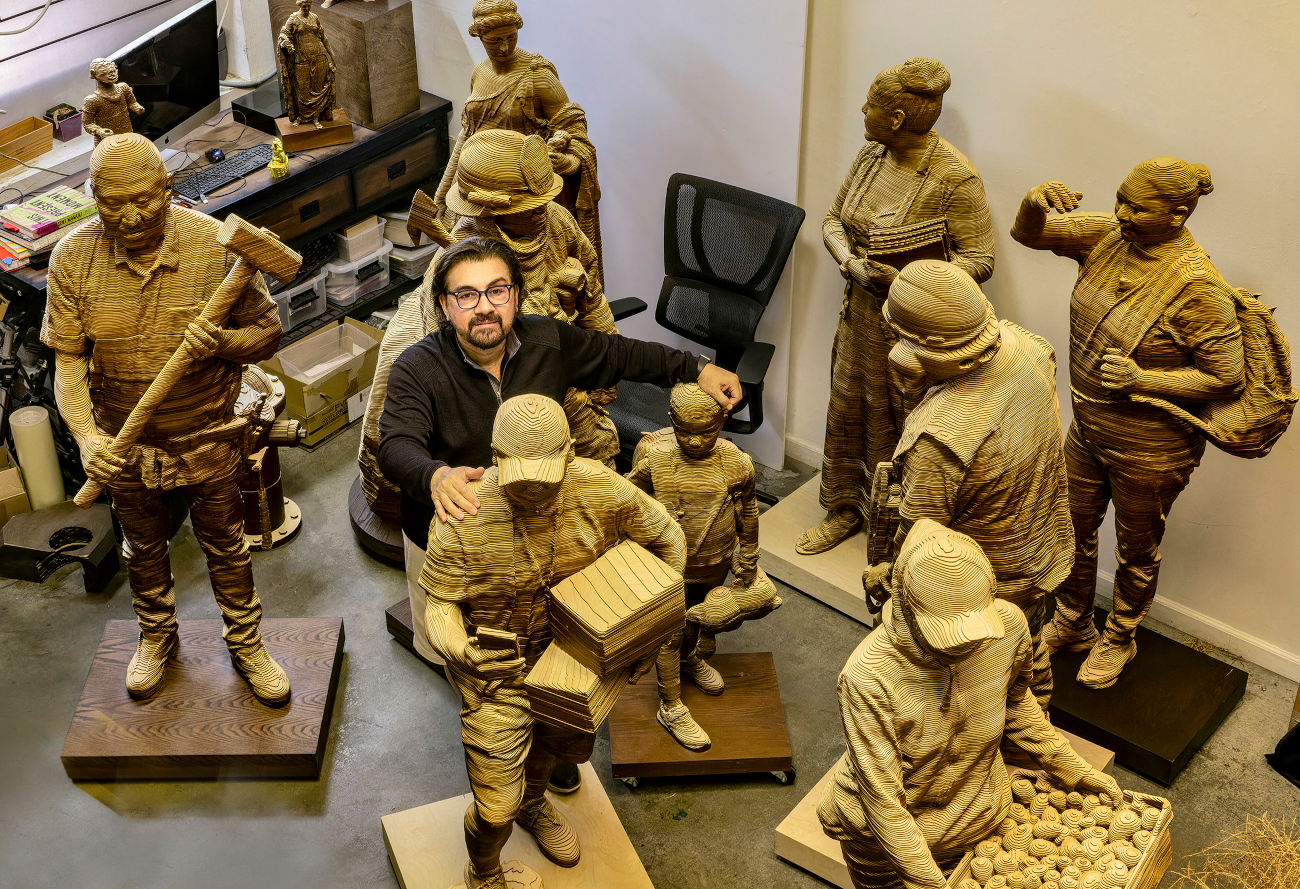
The pandemic made people realize their immense value, courage, and strength.
I wanted to pay homage to these millions of workers through this series, honoring their contributions.
Do you personally know the people figured in the sculptures?
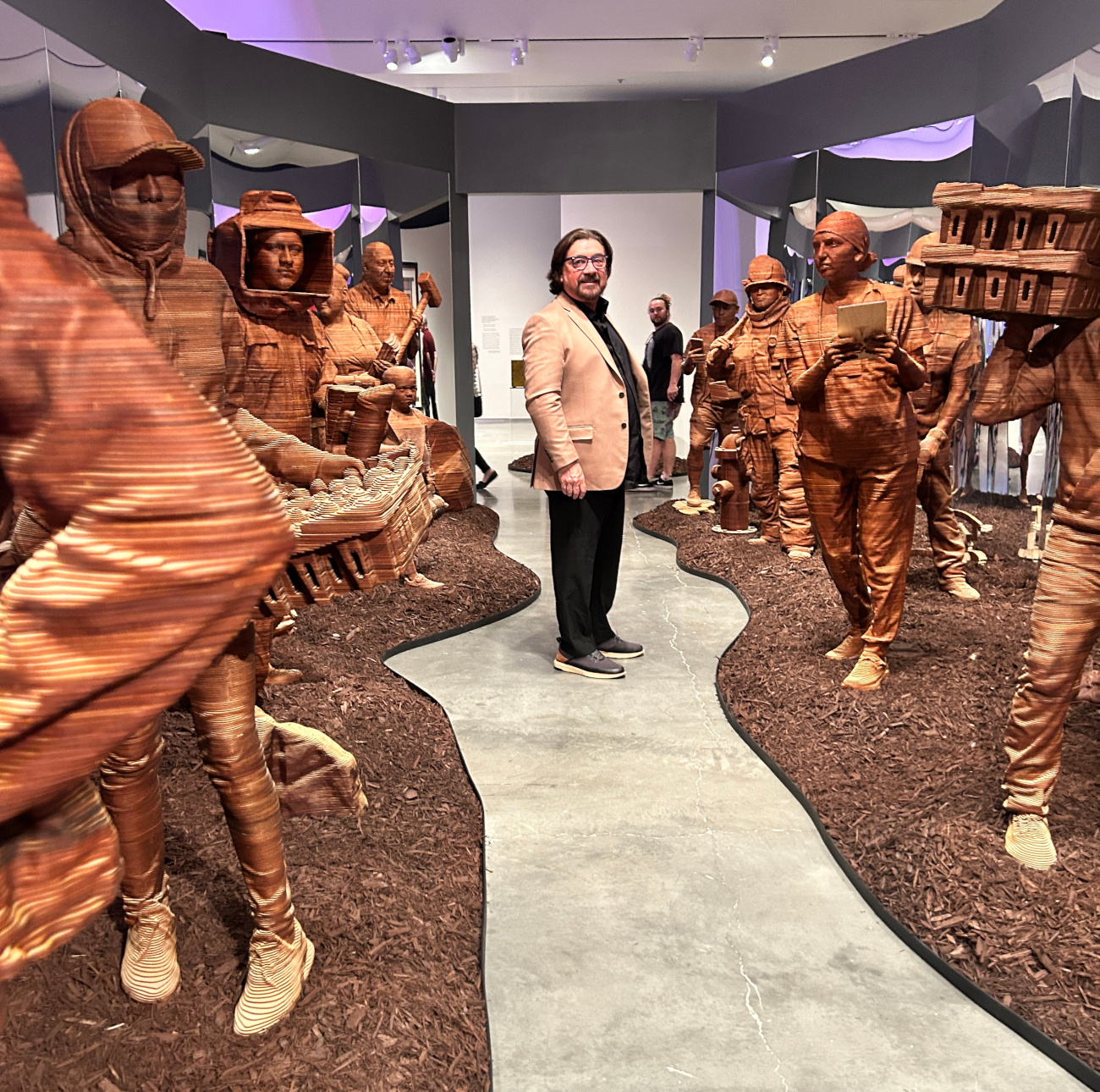
Yes, the sculptures are all based on real people who are part of my everyday life.
Additionally, I worked with strawberry field pickers in Oxnard, capturing their stories through augmented reality components.
Each sculpture is created with precise 3D scanning to capture their character and expression.
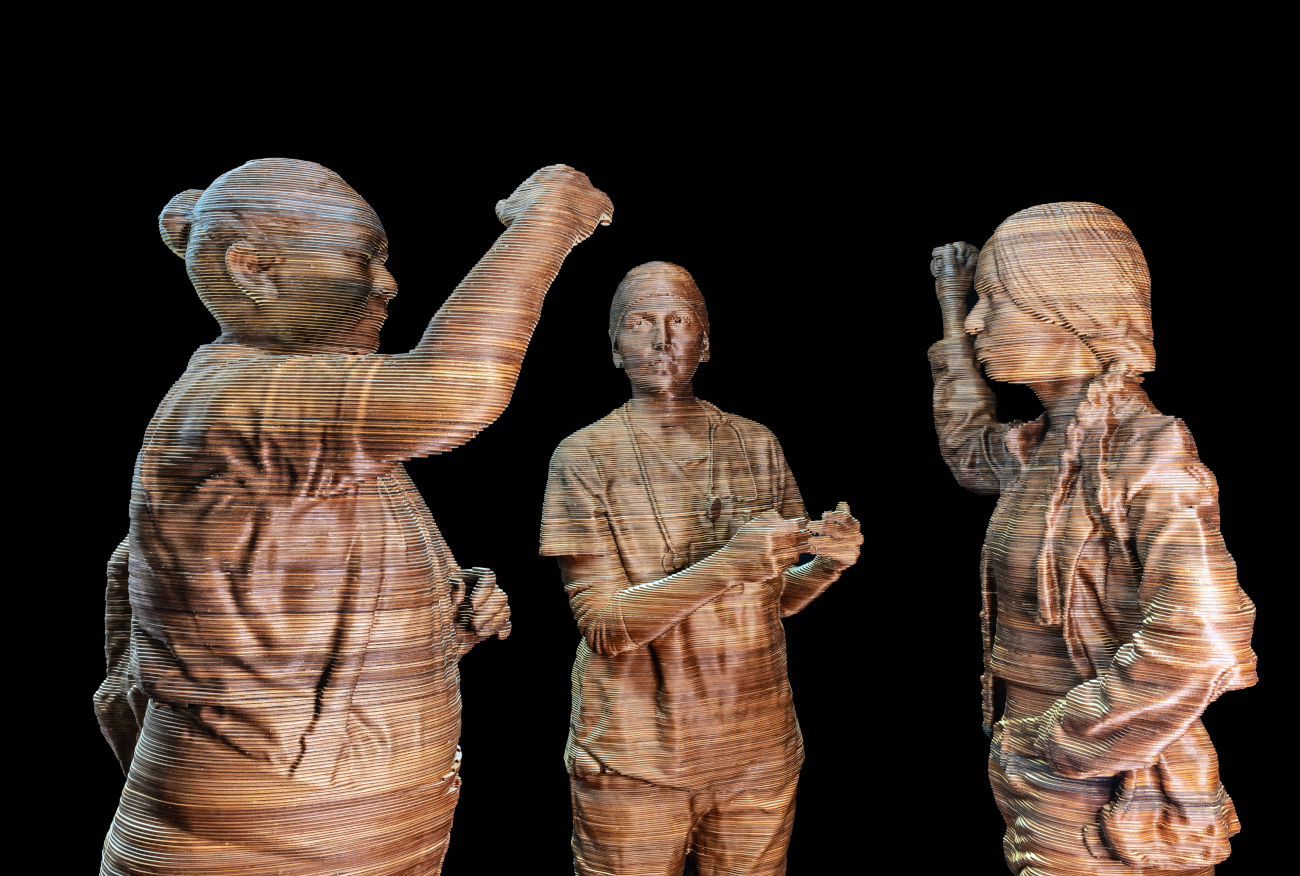
It’s about realism and honoring something larger.
What has the creative process been like?
This project was quite challenging because it required utilizing various technologies.
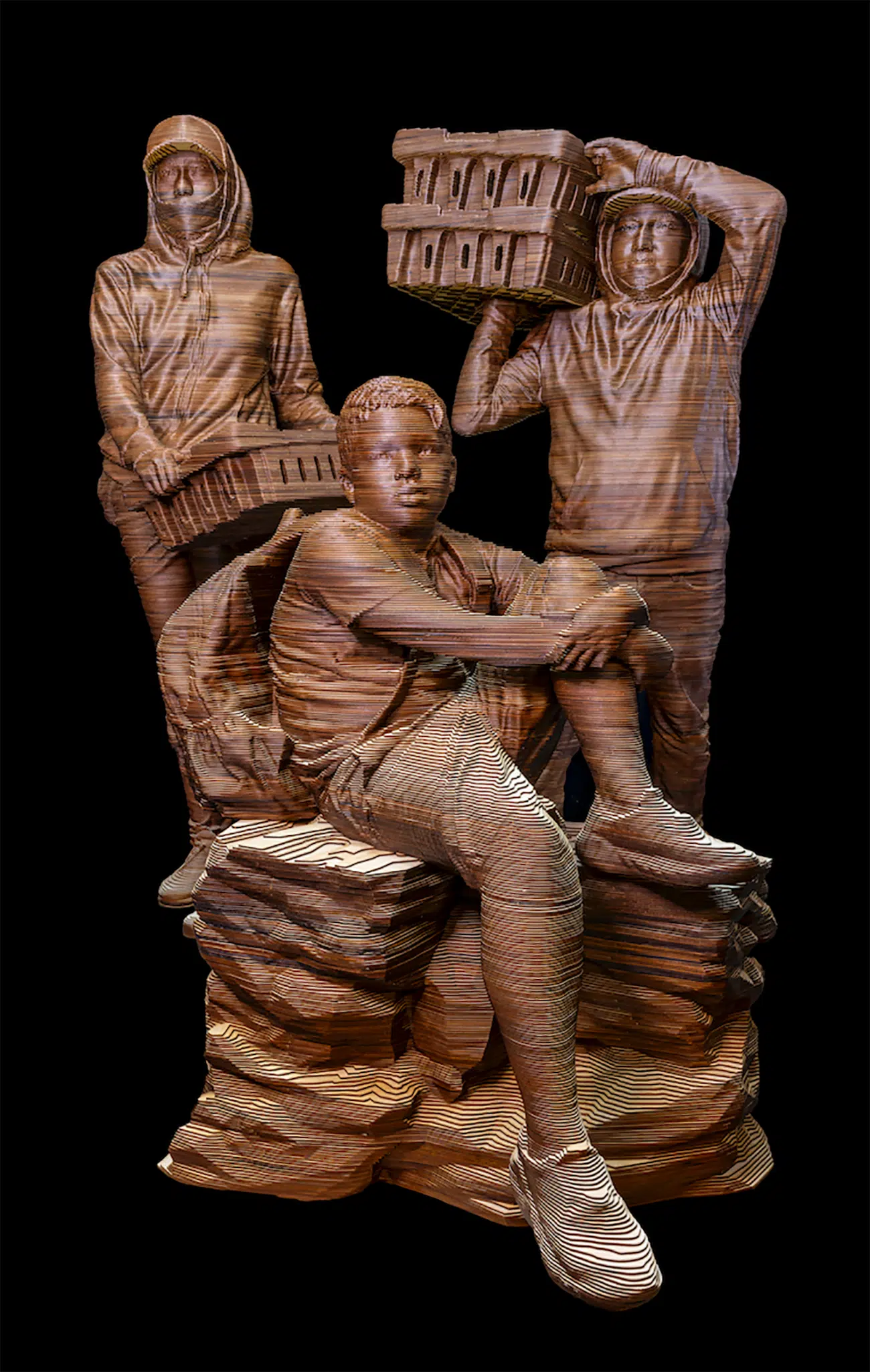
It started with interviews and scouting to find the right people.
Then, we used a high-end 3D scanner to capture detailed 3D models.
Using Rhino software, we sliced these models into 1/8-inch layers to match the material thickness.
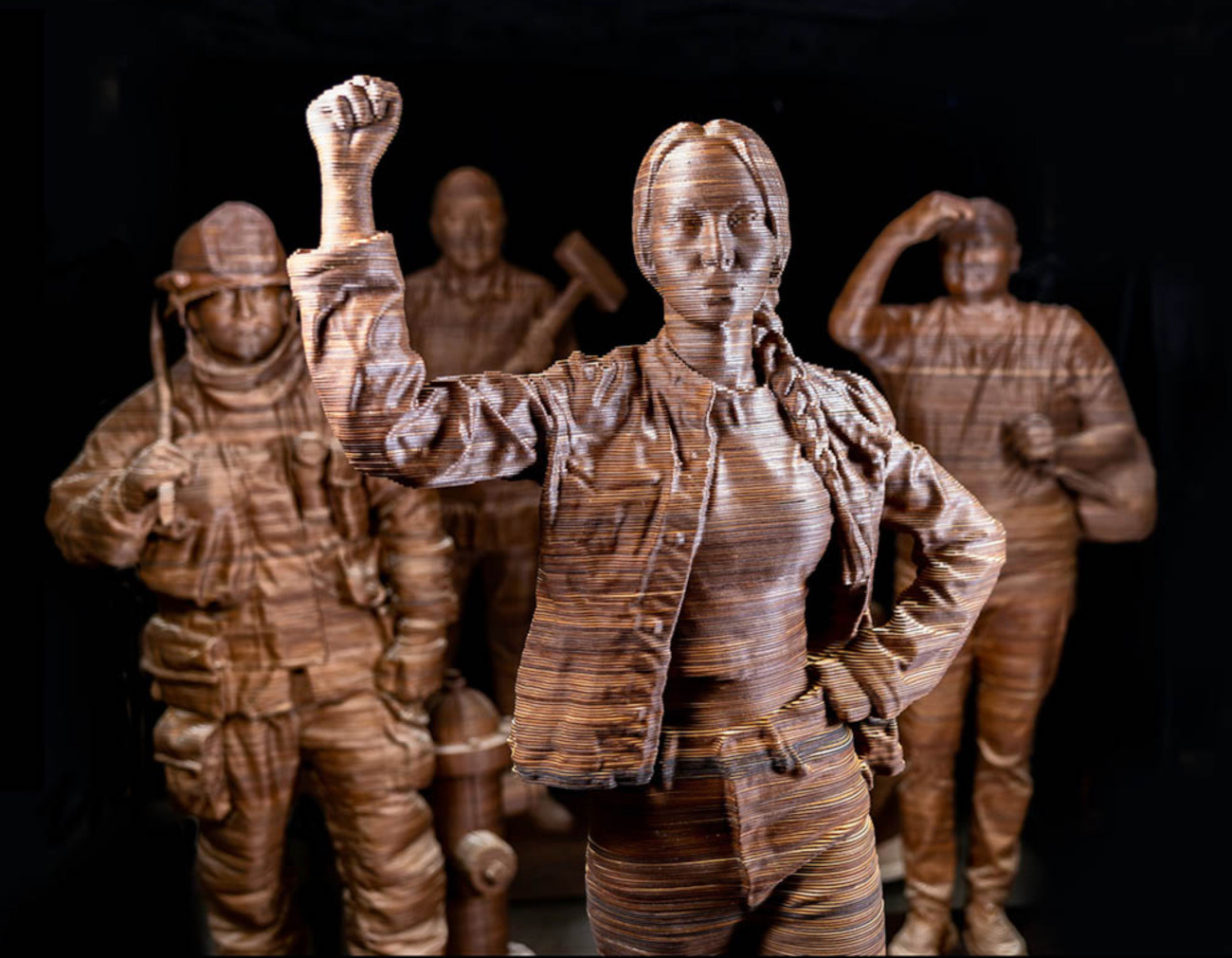
Each layer was then laser-cut from birchwood.
The full sculpture was assembled from about 700 layers, creating a precise representation of the person.
The process blends sculpture with a digital halo effect, emphasizing the intersection of the physical and digital worlds.
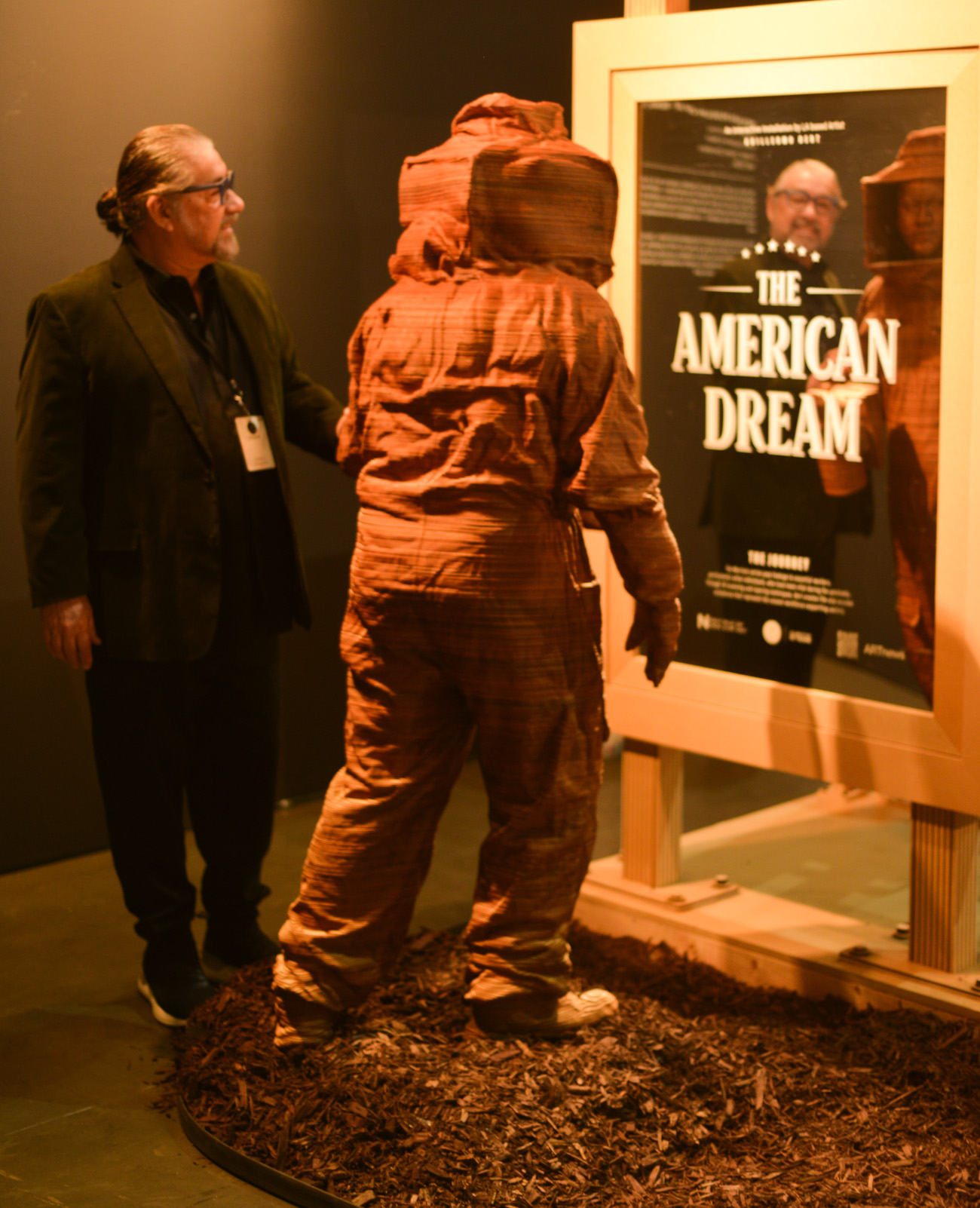
Why did you pick wood as the primary material for these sculptures?
The natural color and laser-cut edges create tonal variations, adding dimension.
It’s also symbolic, representing the layers of sediment and time, much like the figures themselves.
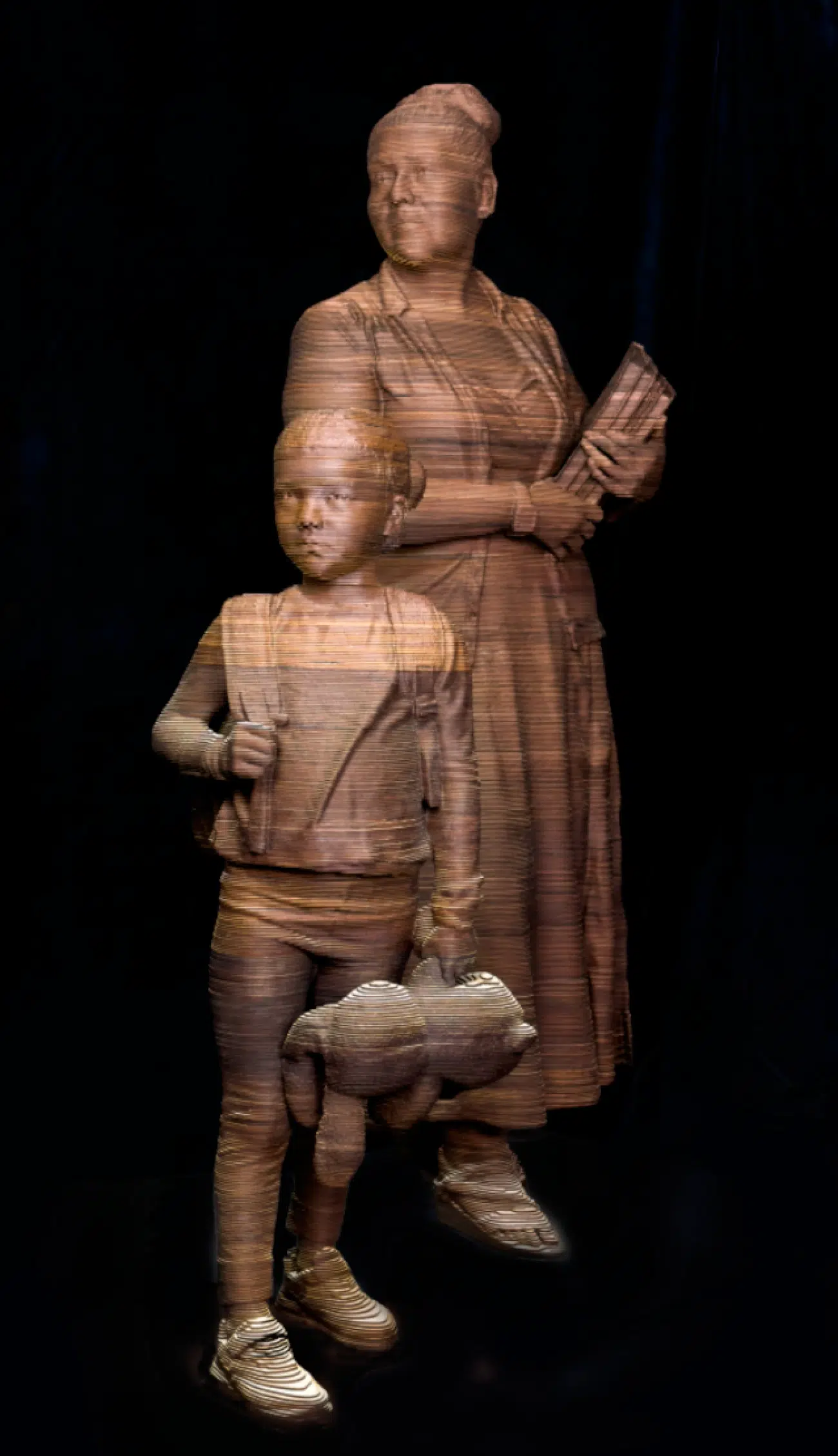
What do they add to each piece?
Integrating new methods like 3D scanning and laser cutting has allowed me to capture reality in a profound way.
These technologies help capture fine details, contours, and expressions, giving a documentary-like quality to the sculptures.
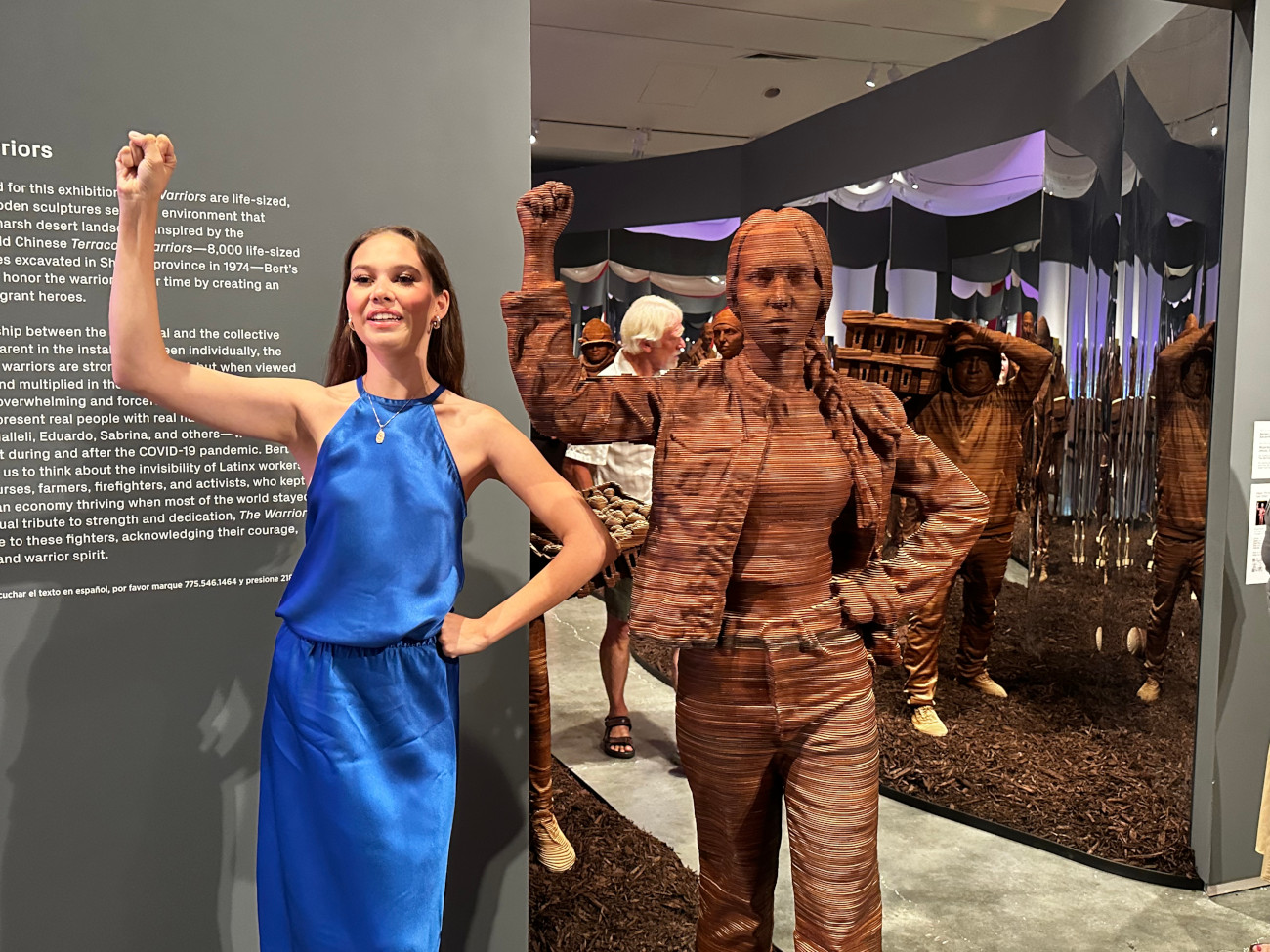
How does this work?
Will you continue to create moreWarriors?
Integrating new methods like laser cutting into my practice has allowed my installation work to evolve and expand.
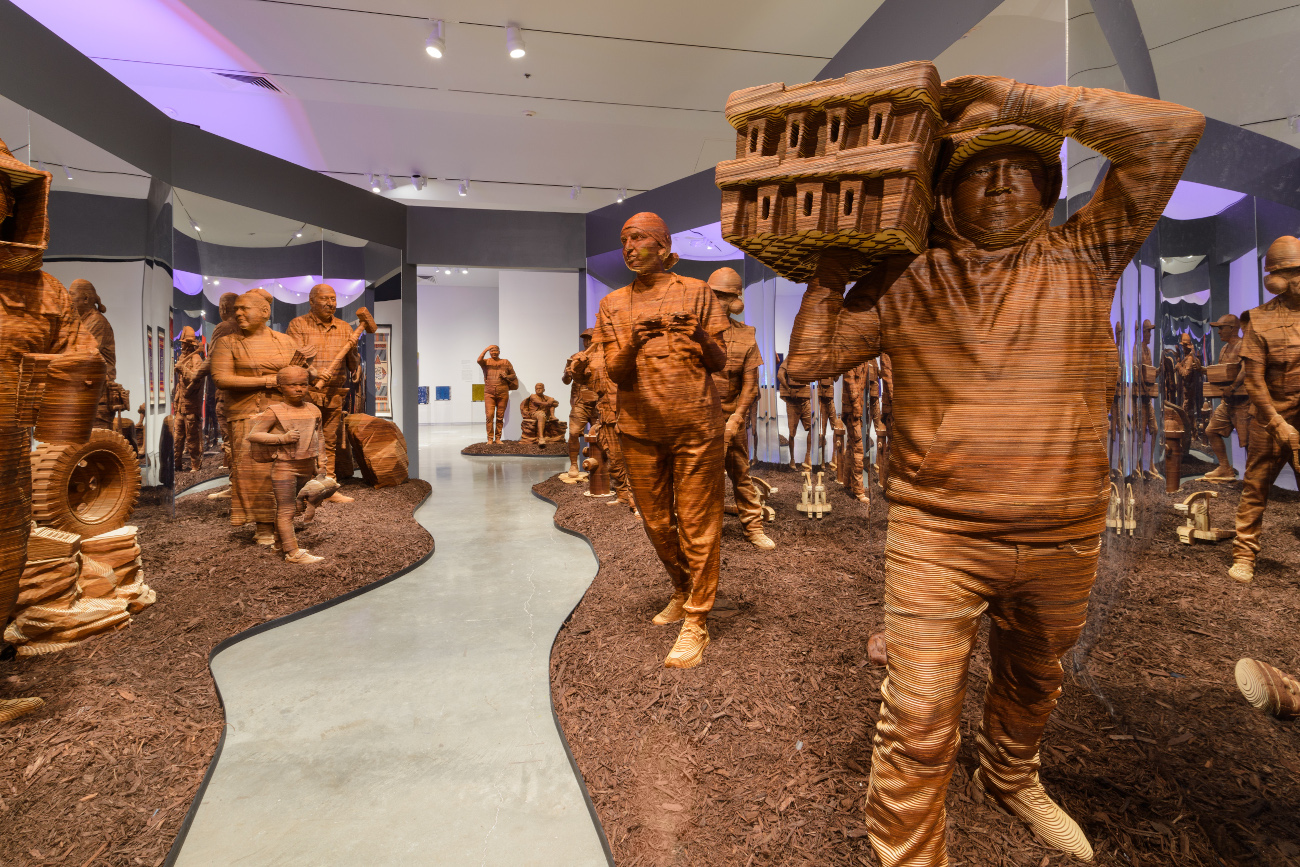
Outside, a mirrored sign reflected the American Dream, allowing sculptures to see themselves.
These conceptual approaches allow the installation to explore different themes and perspectives.
What do you hope people will take away from your art?
